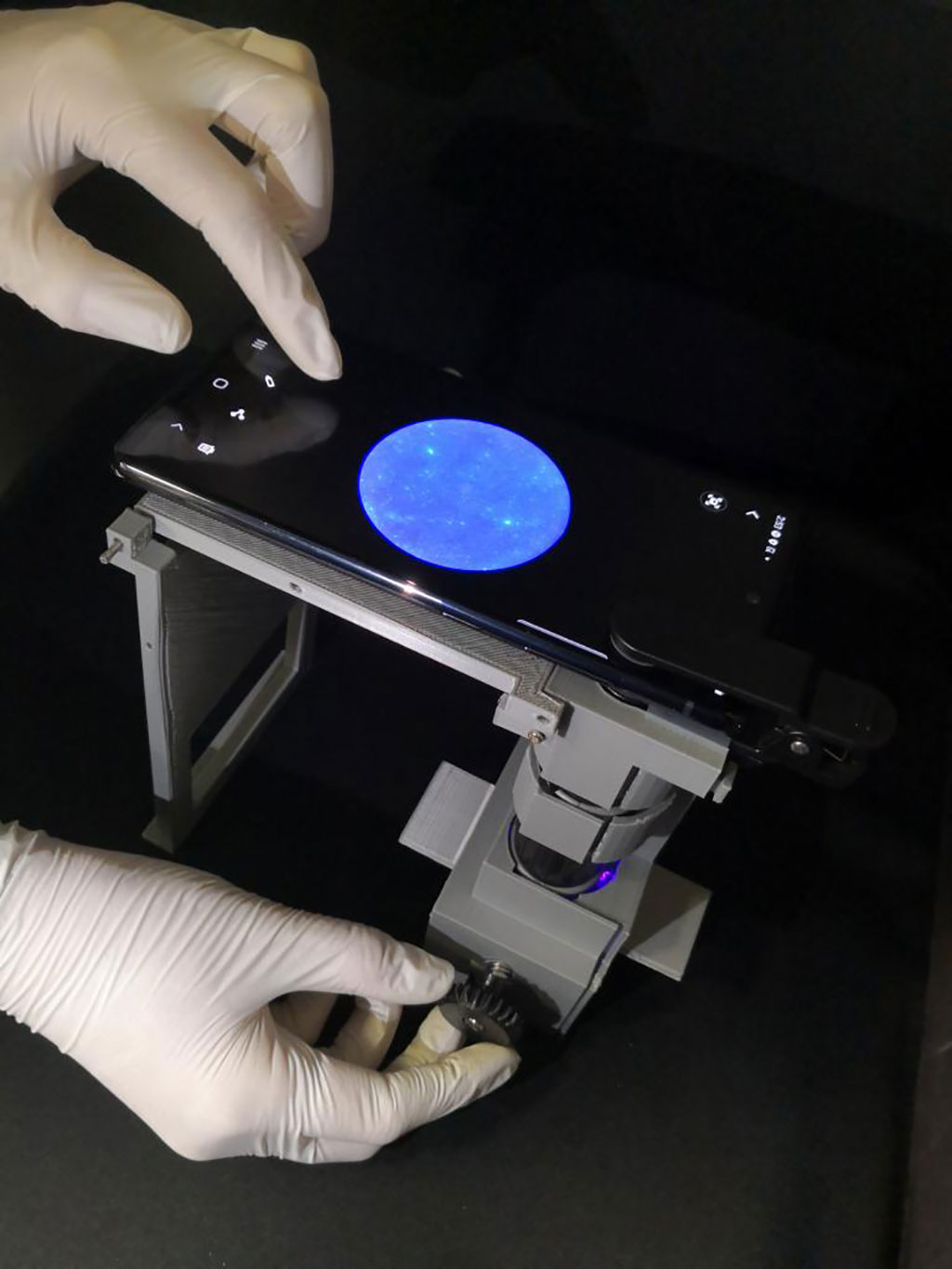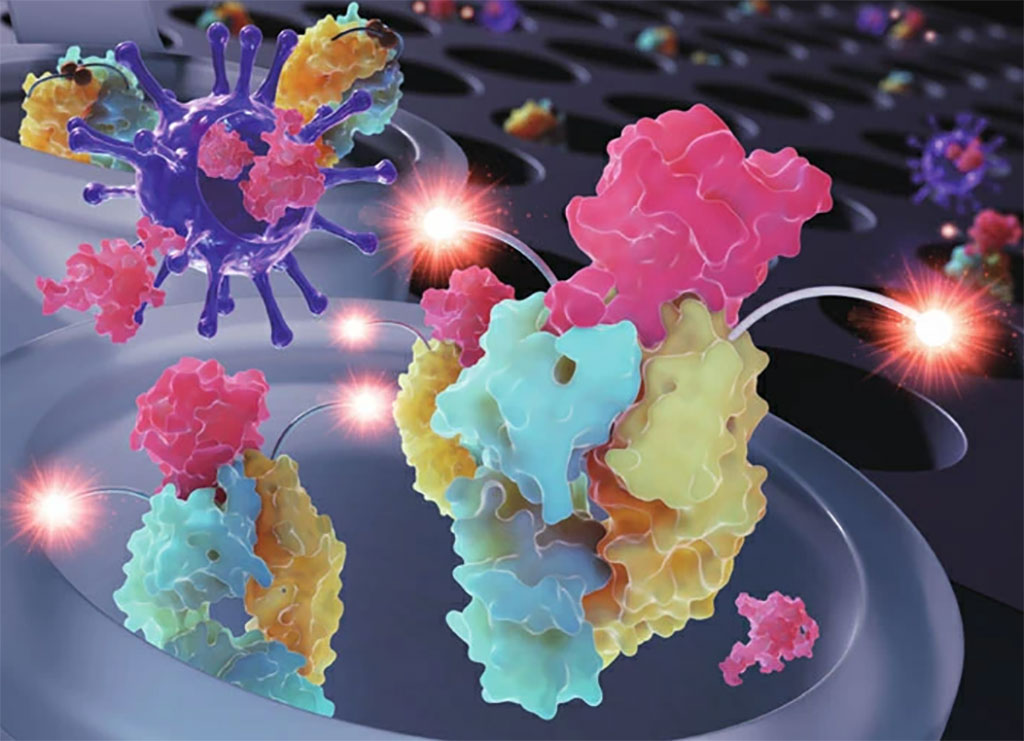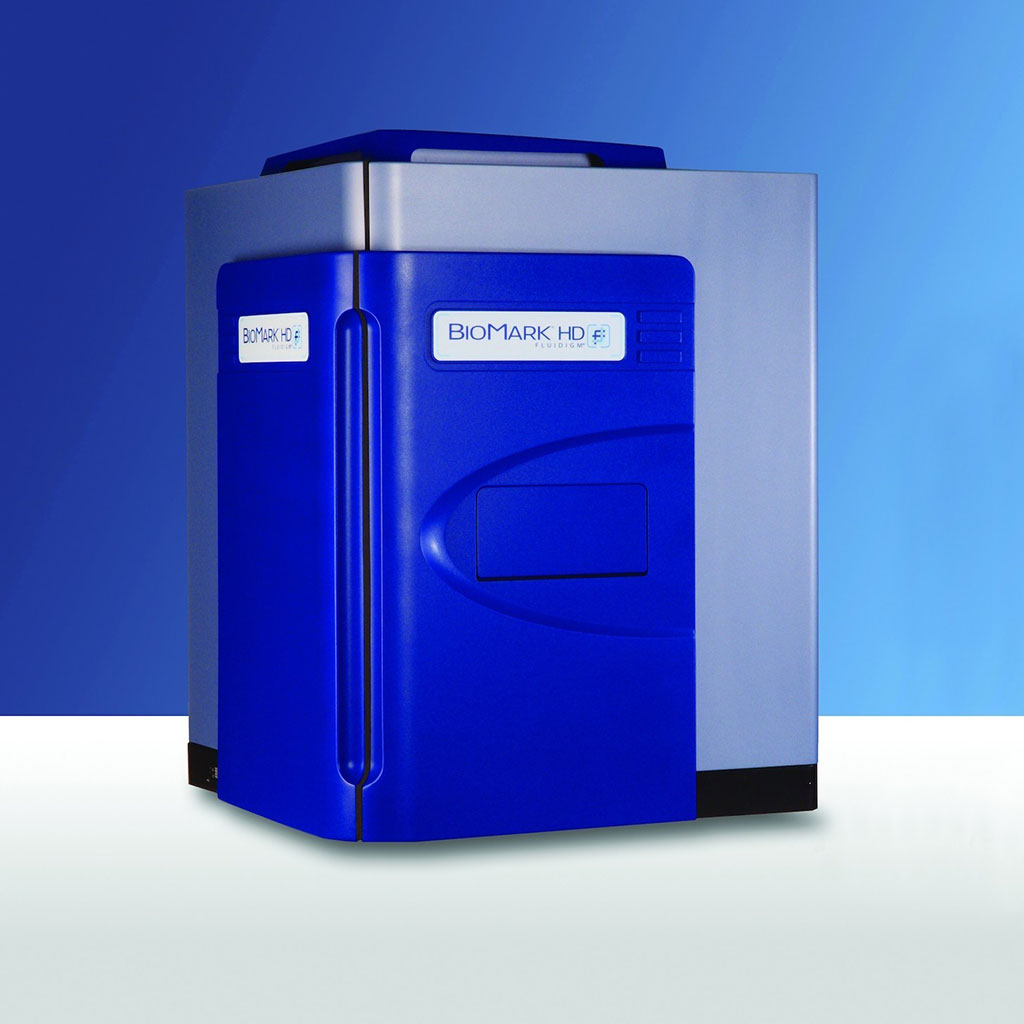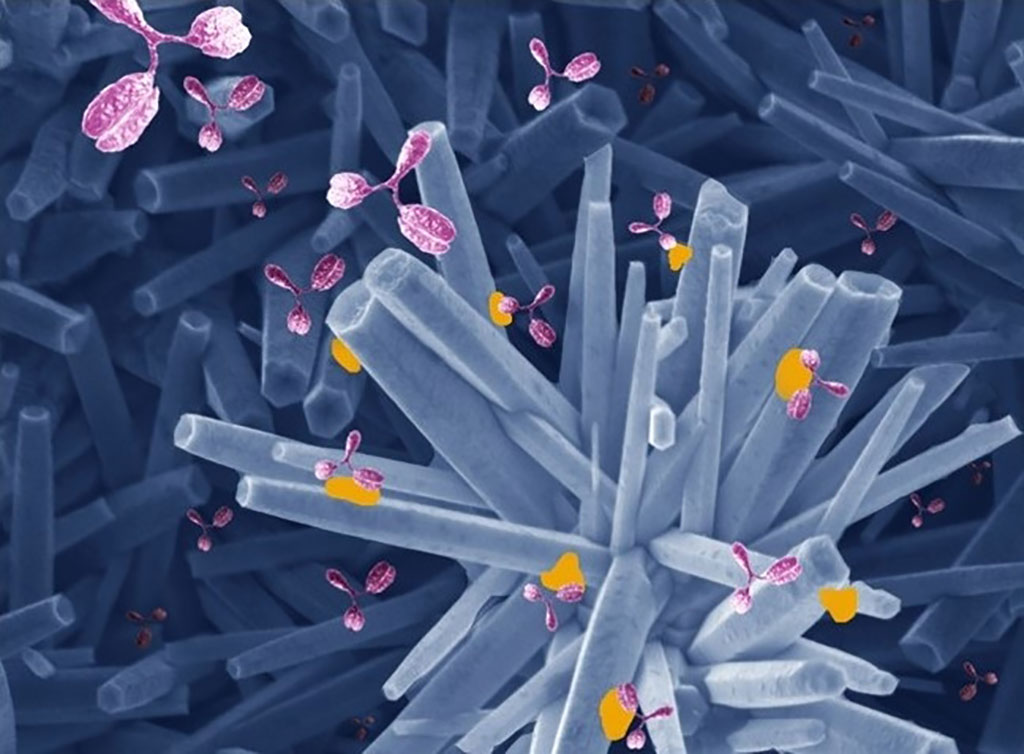New COVID-19 Test Uses Smartphone Microscope to Analyze Saliva Samples and Deliver Results in 10 Minutes
By LabMedica International staff writers
Posted on 01 Feb 2021
A new COVID-19 testing method uses a smartphone microscope to analyze saliva samples and deliver results in about 10 minutes.Posted on 01 Feb 2021
Researchers at the University of Arizona (Tucson, AZ, USA) are developing the new test that aims to combine the speed of existing nasal swab antigen tests with the high accuracy of nasal swab PCR, or polymerase chain reaction, tests. The researchers are adapting an inexpensive method that they originally created to detect norovirus - the microbe famous for spreading on cruise ships - using a smartphone microscope. They plan to use the method in conjunction with a saline swish-gargle test.

Image: UArizona researchers image a sample using a smartphone microscope (Photo courtesy of University of Arizona)
Traditional methods for detection of norovirus or other pathogens are often expensive, involve a large suite of laboratory equipment or require scientific expertise. The smartphone-based norovirus test consists of a smartphone, a simple microscope and a piece of microfluidic paper - a wax-coated paper that guides the liquid sample to flow through specific channels. It is smaller and cheaper than other tests, with the components costing about USD 45.
The basis of the technology is relatively simple. Users introduce antibodies with fluorescent beads to a potentially contaminated water sample. If enough particles of the pathogen are present in the sample, several antibodies attach to each pathogen particle. Under a microscope, the pathogen particles show up as little clumps of fluorescent beads, which the user can then count. The process - adding beads to the sample, soaking a piece of paper in the sample, then taking a smartphone photograph of it under a microscope and counting the beads - takes about 10 to 15 minutes. It's so simple that a non-scientist could learn how to do it by watching a brief video.
The version of the technology makes further improvements, such as creating a 3D-printed housing for the microscope attachment and microfluidic paper chip. The paper also introduces a method called adaptive thresholding. Previously, researchers set a fixed value for what quantity of pathogen constituted a danger, which limited precision levels. The new version uses artificial intelligence to set the danger threshold and account for environmental differences, such as the type of smartphone and the quality of the paper. The researchers plan to fine-tune their method as they adapt it for COVID-19 detection.
"Unlike the fluorescent microscope technique, where you get the chip into just the right position, you just take a snapshot of the chip," said biomedical engineering master's student Pat Akarapipad. "No matter the angle or distance the photo is taken from, the smartphone app can use AI and the QR code to account for variances and run calculations accordingly."
"We've outlined it so that other scientists can basically repeat what we did and create a norovirus-detecting device," said Lane Breshears, a biomedical engineering doctoral student. "Our goal is that if you want to adapt it for something else, like we've adapted it for COVID-19, that you have all the ingredients you need to basically make your own device."
Related Links:
University of Arizona














